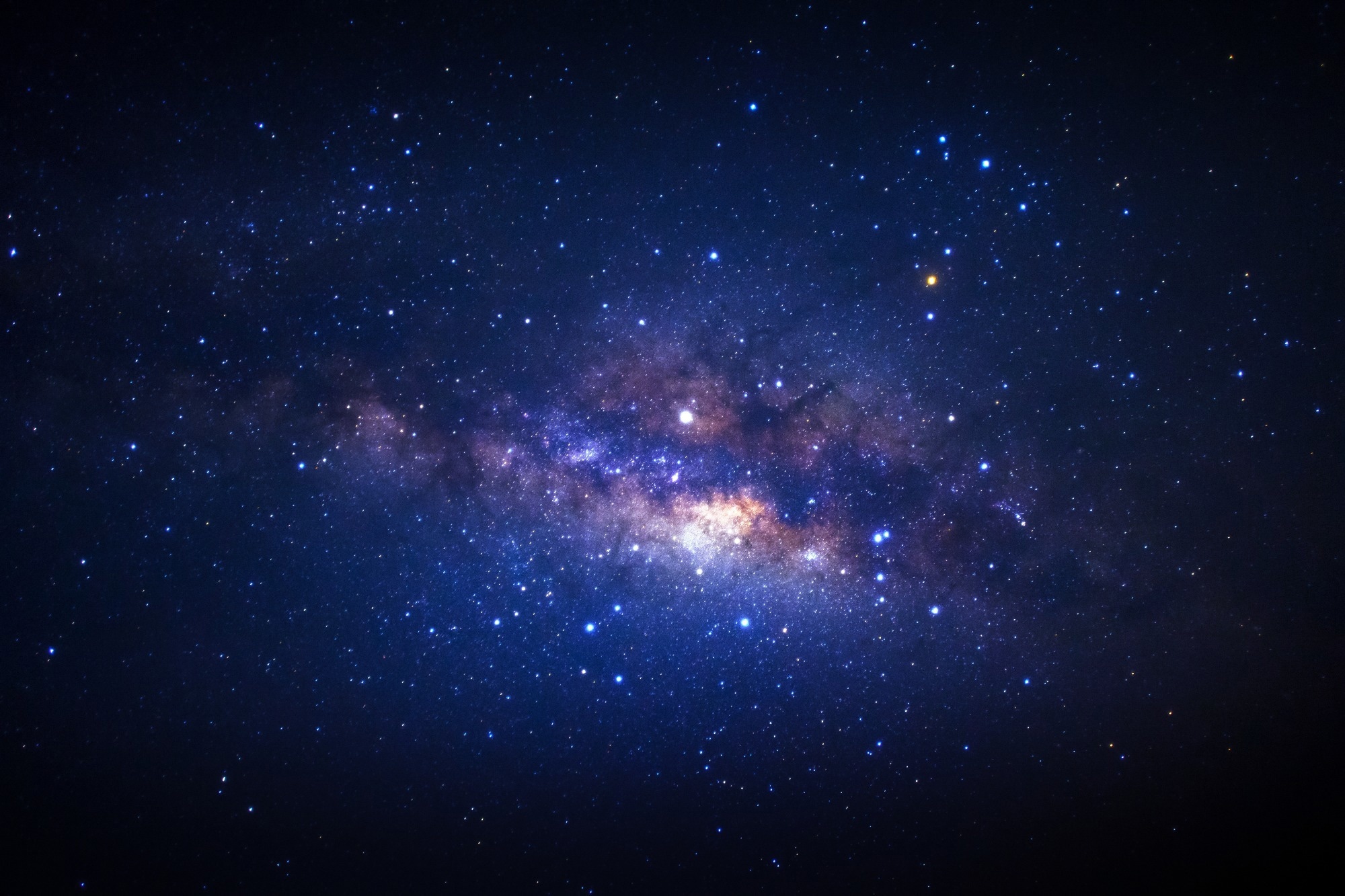Reviewed by Frances BriggsOct 22 2025
In a nearby galaxy, NASA's James Webb Space Telescope has spotted complex organic molecules locked in interstellar ice. These trapped molecules hint that seeds of life may have formed across the cosmos much earlier than previously thought.

Image Credit: sripfoto/Shutterstock.com
Astronomers have used the JWST to detect these complicated molecules frozen in ice outside of the milkyway. A team of researchers at the University of Maryland and NASA's Goddard Space Flight Center have observed a massive protostar called ST6 in the Large Magellanic Cloud (LMC), about 160,000 light years from Earth.
Using the Mid-Infrared Instrument, they identified five organic molecules in the icy material surrounding the star: methanol, acetaldehyde, ethanol, methyl formate, and acetic acid.
This detection is the first conclusive finding of acetic acid in ice in any astrophysical environment, and the detection of the other four materials have not been seen beyond the Milky Way before. The team also saw hints of glycoaldehyde, a simple sugar compound, but its detection remains uncertain.
Additional research is required to validate these findings.
It is all thanks to JWST’s exceptional sensitivity combined with high angular resolution that we are able to detect these faint spectral features associated with ices around such a distant protostar. The spectral resolution of JWST is sufficiently high to allow for reliable identifications.
Marta Sewilo, Research Scientist, NASA
The findings, published in The Astrophysical Journal Letters this week, indicate that complicated organic chemistry can thrive even in harsh, low-metallicity environments like the Large Magellanic Cloud, conditions akin to those of the early cosmos.
Before Webb, methanol had been the only complex organic molecule conclusively detected in ice around protostars, even in our own galaxy. The exceptional quality of our new observations helped us gather an immense amount of information from a single spectrum, more than we’ve ever had before.
Marta Sewilo, Research Scientist, NASA
The galaxy contains around one-third to one-half of the heavy elements (elements with atomic numbers greater than helium) present in our solar system and is subjected to much harsher UV radiation.
Will Rocha, a researcher at Leiden University in the Netherlands, found that COMs may occur in both gas and ice on interstellar dust grains. Ice COMs can be released into the atmosphere after creation; methanol and methyl formate have previously been found in the gas phase of the Large Magellanic Cloud.
While the formation mechanism of COMs is not fully understood, chemical models and lab tests indicate that chemical interactions on the surfaces of interstellar dust grains are the primary contributors to COM production.
Our detection of COMs in ices supports these results. The detection of icy COMs in the Large Magellanic Cloud provides evidence that these reactions can produce them effectively in a much harsher environment than in the solar neighborhood.
Will Rocha, Study Co-Author and Researcher, Leiden University
Finding icy COMs under settings comparable to those in the early cosmos means that the building blocks for bigger biomolecules, which are necessary for the origin of life, occurred far earlier and under a broader range of cosmic conditions than previously assumed.
The results suggest that the ingredients for life could have formed much earlier and under a wider range of galactic conditions than previously believed.
Sewilo and the rest of the team plan to expand the study to other protostars in the Magellanic Clouds to test how the abundance of these organic ices vary between galaxies.
Journal Reference:
Sewilo, M. et.al. (2025) Protostars at Subsolar Metallicity: First Detection of Large Solid-state Complex Organic Molecules in the Large Magellanic Cloud. Astrophysical Journal Letters. doi.org/10.3847/2041-8213/ae0ccd.